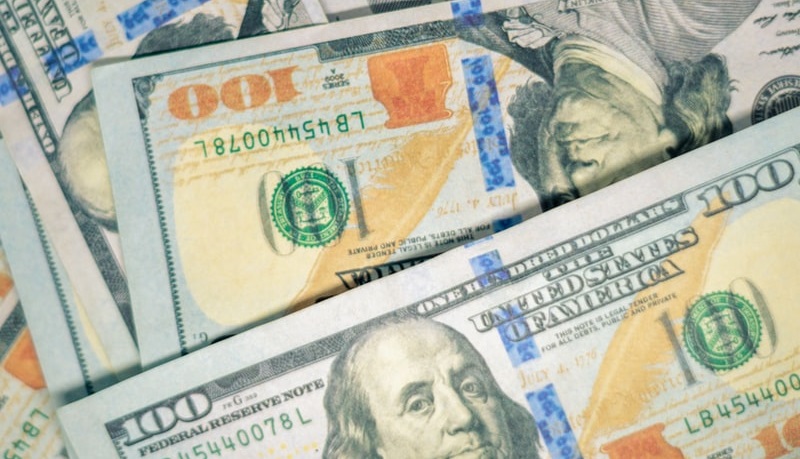Currently trading just to the north of the 93.00 level, the US dollar index is course to post its best monthly performance since July 2019 with gains of roughly 2.4%, during which time the index has rallied from underneath the 91.00 level to as high as the 93.40s earlier on this week. The rally has seen the DXY clear a number of key technical hurdles, including by surpassing its 200DMA which currently reside just above 92.50. Note that if USD does undergo some sort of mini-corrective pullback over the coming weeks, 92.50 will be a key area of support, given that it also coincides with the March 9th highs.
On the year, the DXY is now up roughly 3.5%, a far greater rally than most analysts had been expecting at the start of the year. Indeed, most analysts had actually been expecting the US dollar to continue to decline in the first months of 2021, in a continuation of the near 8% drop seen over the course of H2 2020.
Why has the US dollar been rallying so much?
The rate advantage of holding US government bonds over the likes of Eurozone and Japanese government bond has risen sharply since the start of the year and especially since the start of the month. For reference, while US 10-year yields are up roughly 30bps on the month to above 1.70%, German 10-year yields have dropped marginally back to close to -0.3%, while Japanese 10-year yields continue not to stray too many bps away from the Bank of Japan’s 0.0% target. Needless to say, this has pushed the 10-year US versus German and Japanese rate differentials to fresh post-pandemic highs.
The divergence in fortunes is down to a few key factors; given the faster vaccine rollout and flood of fiscal stimulus already implemented in the US in 2021, expectations for US economic growth in 2021 are significantly higher this year than in the EU or in Japan. This lends itself to more hawkish expectations for Fed policy versus policy from the European Central Bank and Bank of Japan. Indeed, whilst markets are now pricing in interest rate hikes in the US in 2022, expectations for hikes in Europe and Japan are all but non-existent. End result, higher US yields and an increasing rate advantage.
Naturally, higher yields in US denominated debt attracts investment flows from other economies, in particular the Eurozone and Japan, but also from the rest of the world. In order for foreigners to buy US government debt at these higher yields, they must first sell their own currencies and buy USD. Hence the positive correlation between EURUSD and European government bond versus US government bond rate differentials and between USDJPY and Japanese government bond versus US government bond rate differentials.
Central Bank divergence to favour USD
Not only do central banks influence borrowing costs, but they also influence financing conditions, money supply and inflation, factors all of which also affect a currency’s value relative to other currencies. As noted above, markets are expecting significant central bank policy divergence between the Fed and the central banks of other major global economies (namely the ECB, BoJ and perhaps also BoE) in the coming years. Not only does that point to comparatively higher US interest rates, but also to comparatively tighter financing conditions and comparatively less money supply expansion – all of this is likely to benefit the US dollar.
But let’s get a little more specific with regards why this is likely to be the case. In the US right now, while there remains a long way to go for the economy to get back to its pre-pandemic levels of strength, things are looking positive; the vaccine rollout has gone very well (meaning that another surge in deaths and hospitalisations is unlikely), the economy is on the path back to reopening and the economic data has been very strong – part of this strength is as a result of the huge amount of stimulus spending passed by Congress already in 2021 (over $2.8T in spending so far this year, including direct cheques of $2000 to each adult American). As the economy reopens in the summer, all this stimulus is expected to send the recovery into overdrive. The Fed expects growth of 6.5% in 2021.
Now contrast that to the situation in say the Eurozone and Japan. Their vaccine rollouts have been comparatively sluggish versus the US and most of the EU has gone back into some form of fairly strict lockdown in order to contain rising Covid-19 infections. While the recovery is expected to accelerate later in the year as the EU’s vaccine drive catches up and the better summer weather drives Covid-19 cases down, allowing European economies to reopen, growth expectations are much more modest in the EU. The ECB expects Eurozone growth of closer to 4.0% in 2021.
Meanwhile, the Biden administration is expected to unveil huge infrastructure spending over the next eight years which is likely to dwarf spending measures in the EU and Japan and will give the US economy a more sustained boost. Amid these expectations for US economic outperformance in the coming years, markets naturally expect the Fed to start tightening monetary policy far sooner than the likes of the ECB and BoJ, with bullish implications for the US dollar.




